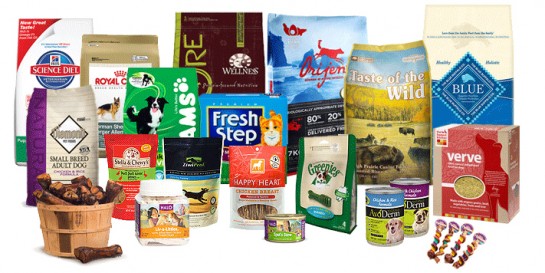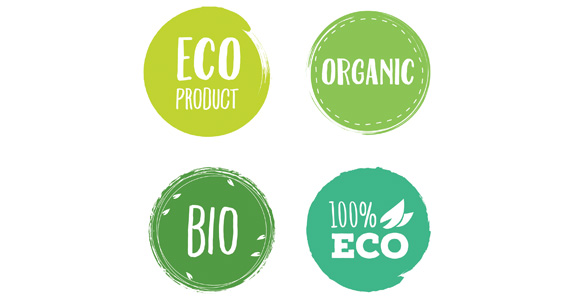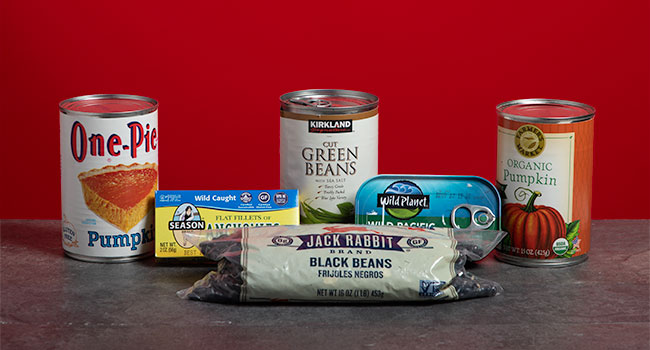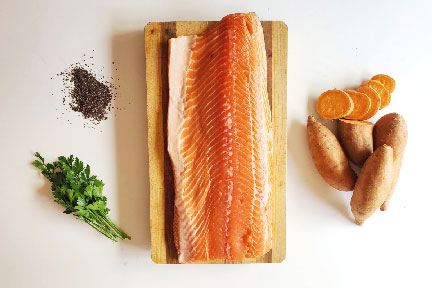Dog Food, the Politics of Production
by Jennifer Wheeler
In the first article of this series I discussed the history of kibble and why we have it: it’s highly profitable for companies; convenient for dog-owners; and makes good use of by-products that would otherwise go to waste. Faced with the vast array of different brands of dog food selling different guarantees (“shiny coat!”, “all natural!”, “protects against joint inflammation!”) one would think that we have come a long way from the days of sheep’s head stew. But have we? In part II I will explore the commercial pet food industry today – who the major players are; how the industry is regulated; and what is really in the can.
Before diving in I need to give credit to Dr. Marion Nestle and Dr. Malden C.Nesheim, the authors of Feed Your Pet Right which was the primary source of information for this article. Their methods, in-depth research and insight are much needed in an area that is dominated by ideologues and authors with a financial stake in the pet food industry.
The Dog Food Industry:
 Learning about the pet food industry left me with the same sense of disillusionment I felt when I learned that my $200 pair of jeans was made in the same factory (and owned by the same parent corporation) as the $30 jeans. Dog food, like denim, carries huge profit margins and everyone wants a piece of the action, but most of the cans and bags lining the shelves of the pet food aisles are, in fact, owned by only a handful of companies. And, you are undoubtedly already familiar with the big Five which control 80% of the market:
Learning about the pet food industry left me with the same sense of disillusionment I felt when I learned that my $200 pair of jeans was made in the same factory (and owned by the same parent corporation) as the $30 jeans. Dog food, like denim, carries huge profit margins and everyone wants a piece of the action, but most of the cans and bags lining the shelves of the pet food aisles are, in fact, owned by only a handful of companies. And, you are undoubtedly already familiar with the big Five which control 80% of the market:
- Nestle: Purina, Beneful, Mighty Dog, Alpo
- Mars: Pedigree, Nutro, Royal Canin
- Colgate-Palmolive: Hill’s Science Diet
- Procter & Gamble: Iams, Eukanuba
- Del Monte Foods: Kibbles and Bits, Gravy Train, Nature’s Recipe
[pullquote]Different labels, different marketing, different prices, same dog food[/pullquote]The manufacturing of dog food is just as concentrated as the market shares. Plants are usually outsourced by the big companies where either wet food (which is canned) or dry food (which is kibbled) is produced using thousands of recipes, with slight variations, to make many more thousands of product lines in all price ranges. Different labels, different marketing, different prices, same dog food (and same denim).
At this point you may be thinking that you’ve beaten the system, found a dog food that is better for your pup. I have news: you probably haven’t. Because dog foods are sold as “complete and balanced”, meaning your dog can live a healthy life by eating only the one product, each brand has to meet the exact same nutritional requirements. The profiles for those nutrient requirements are issued by the American Association of Feed Control Organizations (AAFCO). Though not all states have adopted the AAFCO model regulations and profiles as law, companies must (and do) abide by them in order for their products to be marketed as “complete and balanced.” And it is because of this that nutritionally, commercial pet foods are all pretty much the same.
Among other AAFCO requirements, dog food labels have to contain:
- a statement of guaranteed analysis
- a statement of nutritional adequacy
- a list of ingredients in descending order by weight.
The statement of guaranteed analysis ensures that the food contains adequate levels of protein, fat and fiber by providing crude measurements. “Crude” is basically a way to measure by proxy – for example, the amount of nitrogen present in the food is translated into a measurement for crude protein based on the amount of nitrogen typically found in a protein source. Often on pet food labels you will also see voluntary guarantees of nutrients like calcium, phosphorous and taurine. Besides the fact that taurine is totally unnecessary –dogs make their own – if the food meets AAFCO guidelines (which it does), then it has to have the appropriate amount of calcium, phosphorous and all the other essential nutrients anyway. In other words, voluntary guarantees are for marketing purposes only.
The statement of nutritional adequacy ensures that companies have used one of three methods to demonstrate that their food is “100% complete and balanced.” They can do this by formulating the food specifically to meet AAFCO nutrient profiles, by testing foods through feeding studies, or by making foods with formulas similar to those already tested in a feeding study.
The ingredients are, for many people, the most important requirement for dog food labels. At the top of the list in almost any can or bag of dog food will be grains and meat products but keep in mind that if your dog is eating canned food, the first ingredient is always water (about 75%) and that won’t be on the label. Other ingredients will include binders and thickeners, vitamins, minerals, and antioxidants used as preservatives. While it is frustrating that the quantities of each ingredient are not listed, there is a way to at least have a general sense of ingredient amounts. All the major ingredients and sources of protein, fat and fiber will be listed in the top five, this is obvious. But in order to tell whether the “organic carrots” or “fresh beef” is on the label as a real ingredient or as a marketing gimmick, look to see whether it is listed before or after salt. Salt will almost never be more than .5-1% of the ingredients, so anything after that is just a teeny tiny smidgen.
The Dog Food Preparation Process:

What most consumers want to see on the ingredient list is MEAT, and companies know they can charge more money if they put meat at the top of the list and make it sound appetizing. The other major ingredient is some kind of grain because it is much cheaper than meat and also contains protein (though not as much or as high in quality as meat, so meat meals are added to grains to compensate). But here is the big secret: regardless of how the meat is described, whether it is fresh, rendered, or mealed, it is without exception a by-product. And that’s OK. The meat industry in the United States produces many billions of pounds of animal waste every year. Humans don’t want to consume this so, it is a blessing that we have a pet food industry to make use of the highly nutritious by-products. It makes no difference whether the label says “by-product” or “all beef” – what your dog is consuming are the perfectly tasty parts of the animal that we don’t like such as tails, de-boned backs and organs.
[pullquote]The meat particles have been heated, pulled apart, pushed back together, mashed up, mixed with things and then preserved for your convenience[/pullquote]It also makes no real difference whether the meat product is listed as “fresh” or “rendered”. Here’s why: rendering is a process that basically takes all the unwanted animal parts, boils them together, then grinds them into a meat meal. That doesn’t sound particularly glamorous, but “fresh” is really no fresher. Once the ingredients have been canned or kibbled they have gone through a very complicated and very unnatural process. The meat particles have been heated, pulled apart, pushed back together, mashed up, mixed with things and then preserved for your convenience. In canned food, for example, little particles of meat are reconstituted into chunks with gel or heat. Often times those chunks aren’t even meat, but vegetable protein made to look like meat. Kibbled food is more what-you-see-is-what-you-get. It’s only 10-12% water, and while the mush still has to be heated and “extruded” to produce little shapes that might look like chunks of meat, it’s pretty obvious that they are not.
The processes for canning and kibbling also destroy a lot of the vitamins in food so recipes usually compensate for that by adding 3-5 times the vitamin amounts in the AAFCO profiles and by adding them at the end. In either case, vitamins are almost always synthetic (even in “natural” foods) because synthetic vitamins are much cheaper. Antioxidants are also added as preservatives and are either natural (vitamin E) or synthetic (BHA and BHT). At the end of the process, in one form or another, the final product has an appropriate balance of fat, protein, carbs, vitamins and minerals, and that’s the important stuff.
If you want fresh, feed your dog a pork chop!
Marketing Gimmicks
 Like with any other food product lining the shelves of your local supermarket, dog food is a market that is made more profitable with gimmicks, market segmentation and marketing language that sells. Now that you know it is more or less a level playing field when it comes to the nutritional content of dog foods, it should be easier not to get squeezed. Nonetheless, here are some tips that will help you make your way through the jungle of marketing mumbo jumbo:
Like with any other food product lining the shelves of your local supermarket, dog food is a market that is made more profitable with gimmicks, market segmentation and marketing language that sells. Now that you know it is more or less a level playing field when it comes to the nutritional content of dog foods, it should be easier not to get squeezed. Nonetheless, here are some tips that will help you make your way through the jungle of marketing mumbo jumbo:
- “Premium” is an undefined and unregulated term. Anything can be premium.
- “Beef Dinner” or “Turkey Stew” only has to contain a smidgen of real beef or turkey.
- “All Natural with xyz” means that the “xyz” is not all natural.
- “Organic” can mean many things, as it does in the human food industry.
- Supplements are a gimmick! If it is an essential nutrient, it is already there. If it is anything else there is no good science behind the health claims.
- Keep in mind that if it is in a can or a bag it is never fresh – it is the definition of processed, and all the ingredients are thus processed.
- Don’t buy a breed-specific food. Like with supplements, there is no good science or good reason to do so. It is a gimmick.
So, in a not-so-small nutshell, that’s what’s in the can and why. If you are like me, however, all of this information raises more questions than it answers. Are there alternatives to commercial dog food and do those alternatives have advantages? How are the AAFCO nutrient requirements determined? What risks are posed by an industry that is so concentrated? Can highly processed meat and grains really be as nutritious as fresh ingredients? What choices can I make as a consumer to improve the health and prolong the life of my dog? All of these questions will be addressed in the next and last article of this series Dog Food: The Science of Dog Nutrition.
About the author
Jennifer is a writer and graduate of NYU School of Law. Jennifer researches and writes original, science-based articles for the NYC Doggies blog, and her writing on other topics can be found in the Huffington Post. Jennifer and Ovidiu have co-authored the upcoming book, WHOLE DOG PARENTING: EVERYTHING YOU NEED TO RAISE AND TRAIN AN URBAN PUP










Thank you Jen for another fascinating and useful article. Much to think about! Julie S